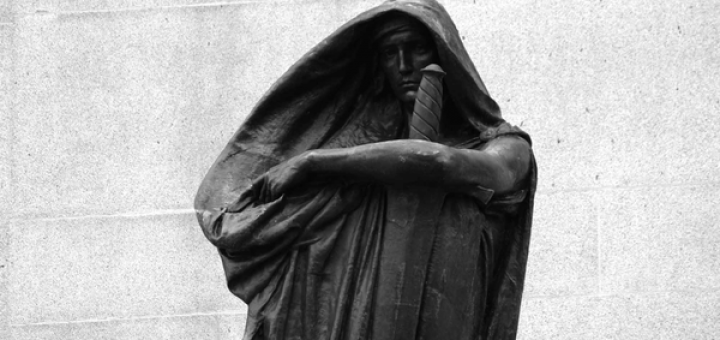The McLachlin Era: A Retrospective (Part II)

Author’s Note: The author would like to thank Professors Benjamin Berger, Signa Daum Shanks, and Bruce Ryder for their generous and thoughtful contributions, without which this post would not have been possible.
This is the second part of a two-part post. Part I offered some insight into the scope and identity of the McLachlin Court, as well as a discussion of one of the most significant contributions of the McLachlin Court, the expansion of robust protections under section 7 of the Charter. In Part II, the post will begin by discussing what I take to be the most significant disappointment and missed opportunity by the McLachlin Court; namely, its reluctance to take more significant, yet necessary steps to restructure our law’s approach to jurisprudence affecting the rights of Indigenous peoples.
The post will then conclude with a reflection on the lasting impact of the former Chief Justice, and a recognition of her importance in expanding the relevance of, respect for, and trust in the Supreme Court both domestically and abroad.
A Hesitance to Radically Advance Indigenous Jurisprudence
Since 2000, the Supreme Court has rendered decisions in dozens of cases dealing with section 35 and the rights of Indigenous peoples. In some ways, these decisions have marked a steady progression in Canada’s acknowledgement of past wrongs and in its development of a set of legal tools for Indigenous nations to reclaim their land and culture. For instance, in Haida Nation v British Columbia, 2004 SCC 73, the Supreme Court established the duty to consult and accommodate, which imposes on government the duty to engage in consultations with Indigenous nations and, if necessary, accommodate their interests before authorizing any actions that could result in harm to the land while an Aboriginal claim remains unresolved. And, in perhaps the most important Aboriginal rights case in Canadian history, the Court in Tsilhqot’in Nation v British Columbia, 2014 SCC 44 [Tsilhqot’in Nation], awarded Aboriginal title for the first time to an Indigenous nation and helped develop the requirements for proving Aboriginal title in a manner more sensitive to historic practices of Indigenous peoples (i.e. nomadic and semi-nomadic lifestyles). Other decisions, such as R v Ipeelee, 2012 SCC 13—which reaffirmed the importance of the Gladue principles in the sentencing of Indigenous offenders—have worked to reinforce the need to reform a justice system that oppresses Indigenous people at almost every turn.
It is relatively clear, then, that the McLachlin Court, more so than any Court before it, made positive steps to advance the rights and protections of Indigenous peoples in Canada. This progress, however, has come within a framework that remains riddled with colonial and paternalistic logic. And, it is in the McLachlin Court’s reluctance to fundamentally reform this structure that the disappointment lies.
For instance, despite the clear value of offering Indigenous nations interim protection in the form of the duty to consult and accommodate, the balance of power between the government and Indigenous nations, both in terms of material and legal resources, is deeply uneven. As it stands, Indigenous parties are effectively at the mercy of the government, as the Crown maintains discretion to decide, unilaterally, when the honour of the Crown has been met and negotiations can be declared at an end. While such decisions are subject to judicial review, this is not a meaningful or practical framework upon which trust and equality can be established. The Supreme Court has chosen not to address these issues. It therefore remains possible for large development projects to proceed on lands subject to claims of Aboriginal title without the consent of the affected nations (as most recently occurred in Ktunaxa Nation v BC, 2017 SCC 54). While disappointing in its own right, this reluctance to reinterpret the law is made worse in light of Article 19 of the United Nations Declaration on the Rights of Indigenous Peoples, which calls for countries to “consult and cooperate in good faith with the [I]ndigenous peoples concerned through their own representative institutions in order to obtain their free, prior and informed consent before adopting and implementing legislative or administrative measures that may affect them.”
Similarly, despite the obvious improvements offered by the Court in Tsilhqot’in Nation to the law on Aboriginal title, the onus remains on Aboriginal groups to prove to the courts that they have title to the land as a result of occupation and use prior to the assertion of sovereignty by the Crown. As Professor Kent McNeil has argued, the logic of this requirement is entirely backward; why should Indigenous nations have to prove title to the land “given the undeniable fact of their pre-existing occupation of [the] land”? (“The Onus of Proof of Aboriginal Title” at 778). According to McNeil, Aboriginal title should instead function on the basis of the common law principles that “title is presumed from possession” and that “possession is title as against a challenger who cannot prove that he or she has better title” (783, emphasis in original). From these premises it follows that, where an Indigenous nation presently occupies land (as a result of regular use, for instance), they should be presumptively understood to retain title to the land. Such title would be rebuttable only where the Crown could “prov[e] that the land was unoccupied when the Crown asserted sovereignty, or if occupied, by showing that the Aboriginal title to the land had been lost by valid extinguishment or surrender” (783-86). Beyond its simple elegance, this argument bears further weight in light of the fact that such common law principles operate in all areas of property law except as concerns Aboriginal lands. In other words, Aboriginal title is the only instance where those in possession of the land must prove title; the burden is uniquely Indigenous. This hypocrisy, with its origins in the colonial notion of terra nullius, is not only dangerous in its oppression of Indigenous peoples, but in its ability to threaten the stability of the common law principles themselves. For Professor Bruce Ryder, the failure to recognize and remedy such systemic inconsistencies is made all the more troubling “now that the TRC Report [has] so eloquently renewed the call to look that fundamental flaw of our constitutional structure straight in the eye.”
The ultimate consequence of this oversight by the Court is its insidious effects on even seemingly-positive decisions. Consider, for instance, Daniels v Canada, 2016 SCC 12 [Daniels]. On its face, Daniels is a progressive decision and a ‘win’ for Métis peoples in Canada, with the Supreme Court recognizing that “Métis and non-status Indians are “Indians” under s[ection] 91(24)” of the Constitution Act, 1867 (paras 1, 10). Upon closer examination, however, the decision can be seen to continue to validate colonial legislation—the Indian Act, RSC 1985, c I-5—as well as create potential precedential barriers for the way in which Métis peoples choose to define and understand themselves (Signa Daum Shanks, “The Wastelander Life: Living Before and After the Release of Daniels v Canada” at 1351-355). The decision has been called “an inkblot” in the sense that it shifts with perspective; its meaning is uncertain and may not be what it seems on its face (1343, n 8). For me, much of this uncertainty—not simply in Daniels, but across the Supreme Court’s Indigenous jurisprudence—stems from an underlying fear that, since section 35 operates within a fundamentally colonial and paternalistic framework, there is a sense in which nothing can be good news until it has been truly proven to be so. The spectre of misinterpretation (or worse, intentional misrepresentation) is always present. And, with laws based on core tenets that do not tend toward equality or mutual respect (i.e. terra nullius, unequal bargaining power in duty to consult and accommodate, etc.), such fears are well founded.
To make fundamental shifts in the law is not an easy task. The common law progresses often at a glacial pace. The problem, however, is that, in the case of Reconciliation, to move at a glacial pace is to accept oppression over the collateral consequences of radical, but necessary change. The McLachlin Court was arguably the most progressive Supreme Court in Canada’s history, particularly in the area of Indigenous issues. Unfortunately, there was room for much greater strides to be taken.
The opportunity now rests with the Wagner Court to take up the challenge and act to revise Canada’s approach to Indigenous jurisprudence.
The Lasting Impact of the Chief Justice
To end this post, I want to consider the impact of the McLachlin Court, and Chief Justice McLachlin in particular, on the Supreme Court as an institution and on Canadian society as a whole. On this topic, many things come to mind, from her impact as the first female Chief Justice of Canada, to her continuous recognition of the need to improve access to justice in Canada.
What strikes me as most significant, however—and I must attribute this thought entirely to Professor Berger—is that, through all the changes overseen by McLachlin during her tenure as Chief Justice, there has been a continuous and unwavering sense of trust in, and respect for, our highest court. And, for Professor Berger, this is a consequence of the Supreme Court’s ability to occupy what might be understood as a truly judicial space; the Court has operated neither as a “detached, delphic oracle,” nor a “purely political institution.” Rather, it has been able to establish a delicate balance between these poles. It has been able to give substantive meaning to the principles underlying our nation’s constitution.
This accomplishment has not gone unnoticed. According to Professor Ran Hirschl, the Supreme Court of Canada, along with the German Federal Constitutional Court and the European Court of Human Rights have “emerged as three of the most frequently cited in the world” (Comparative Matters: The Renaissance of Comparative Constitutional Law (UK: Oxford Univeristy Press, 2014) at 27). The Supreme Court’s jurisprudence is “routinely cited by courts in South Africa, New Zealand, Israel, the United Kingdom, Australia, India, and by the European Court of Human Rights” (28). Further, Hirschl notes that, despite the relative recency of both the Supreme Court of Canada as Canada’s “peak” court—the Privy Council served as Canada’s final court of appeal until 1949—and the Charter, “constitutional thought in its entire variety is now one of Canada’s main intellectual exports” (139). And, it is notable that, while international “pollination” of constitutional thought has increased over past decades, the rise of the international relevance of the Supreme Court of Canada, particularly under the leadership of McLachlin, has coincided with the general “waning in global influence of the US Supreme Court” (23-31). In other words, the Supreme Court has developed a reputation as a global leader (On these points, see also, David S Law & Mila Versteeg, “The Declining Influence of the United States Constitution”).
And, while credit for these accomplishments must be shared across all the Justices that have sat on the Court (and that continue to do so), it must also be acknowledged that, as the face of the Court for 18 years, Chief Justice McLachlin was truly remarkable. Described by those who know her as a profoundly compassionate, humble, and hardworking individual, Beverley McLachlin has set a new, and lofty standard for what it means to serve as Chief Justice and to dedicate oneself to the law and to the upholding of the integrity of an incredibly meaningful institution.






Join the conversation